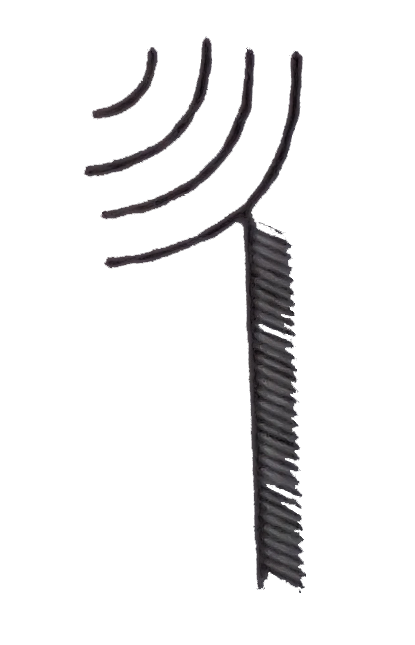List - I List -II
a) spherical wave front e) location of new wave front
b) plane wave front f) line source
c) cylindrical wave front g) point source at finite distance
d) Huygen's principle h) point source at infinite distance
A−G,B−H,C−F,D−E
A−H,B−G,C−F,D−E
A−H,B−G,C−E,D−F
A−H,B−G,C−F,D−E
The correct Answer is:A
To solve the matching question between List I and List II, we will analyze each item in List I and find its corresponding match in List II based on the principles of wave optics.
1. Identify Spherical Wave Front (a):
- A spherical wave front is produced by a point source at a finite distance. As the waves propagate from the source, they form concentric spherical surfaces.
- Match: a) Spherical wave front → g) Point source at finite distance.
2. Identify Plane Wave Front (b):
- A plane wave front is typically produced by a point source that is very far away (at infinite distance). The waves arrive parallel to each other, creating a flat wave front.
- Match: b) Plane wave front → h) Point source at infinite distance.
3. Identify Cylindrical Wave Front (c):
- A cylindrical wave front is generated by a line source. The waves spread out in cylindrical shapes from the line source.
- Match: c) Cylindrical wave front → f) Line source.
4. Identify Huygen's Principle (d):
- Huygen's principle states that every point on a wave front can be considered a source of secondary wavelets, and the new wave front is formed by the envelope of these wavelets.
- Match: d) Huygen's principle → e) Location of new wave front.
Final Matches:
- a) Spherical wave front → g) Point source at finite distance
- b) Plane wave front → h) Point source at infinite distance
- c) Cylindrical wave front → f) Line source
- d) Huygen's principle → e) Location of new wave front
Summary of Matches:
- a → g
- b → h
- c → f
- d → e
- A spherical wave front is produced by a point source at a finite distance. As the waves propagate from the source, they form concentric spherical surfaces.
- Match: a) Spherical wave front → g) Point source at finite distance.
- A plane wave front is typically produced by a point source that is very far away (at infinite distance). The waves arrive parallel to each other, creating a flat wave front.
- Match: b) Plane wave front → h) Point source at infinite distance.
- A cylindrical wave front is generated by a line source. The waves spread out in cylindrical shapes from the line source.
- Match: c) Cylindrical wave front → f) Line source.
- Huygen's principle states that every point on a wave front can be considered a source of secondary wavelets, and the new wave front is formed by the envelope of these wavelets.
- Match: d) Huygen's principle → e) Location of new wave front.
- a) Spherical wave front → g) Point source at finite distance
- b) Plane wave front → h) Point source at infinite distance
- c) Cylindrical wave front → f) Line source
- d) Huygen's principle → e) Location of new wave front
- a → g
- b → h
- c → f
- d → e
Topper's Solved these Questions
- WAVES OPTICSBOOK - AAKASH SERIESCHAPTER - WAVES OPTICSEXERCISE - EXERCISE -IA (ASCENDING AND DSCENDING ORDER TYPE QUESTIONS)
6 Videos
- WAVES OPTICSBOOK - AAKASH SERIESCHAPTER - WAVES OPTICSEXERCISE - EXERCISE -IB (ASSERTION AND REASON)
67 Videos
- WAVES OPTICSBOOK - AAKASH SERIESCHAPTER - WAVES OPTICSEXERCISE - EXERCISE -IA (MORE THAN ONE OPTION)
14 Videos
- WAVESBOOK - AAKASH SERIESCHAPTER - WAVESEXERCISE - EXERCISE-III (Doppler effect :)
15 Videos
Similar Questions
Knowledge Check
Spherical wavefronts, emanating from a point source, strike a plane reflecting surface. What will happen to these wave fronts, immediately after reflection?
AThey will remain spherical with the same curvature, both in magnitude and sign.BThey will become plane wave fronts.CThey will become plane wave fronts.DThey will remain spherical, but with different curvature, both in magnitude and sign.
What type of wave front is associated with a line source of light?
View SolutionSpherical wave fronts shown in figure,strike a plane mirror .reflected

View SolutionIf A is the amplitude of the wave coming from a line source at a distance r, then :
View SolutionA point source of light is placed in front of a plane mirror.
View SolutionIf the amplitude of waves at a distance r from line source is A. The amplitude at a distance 4r will be
View SolutionList-I List-II
a) Fresnel's diffraction e) Bright band
b) Fraunhofer's diffraction f) Source and screen are at finite distance
c) In interference phase difference is even multiple of π g) Dark band
d) In interference phase difference is odd multiple of π h) Source and screen are at infinite distance
View SolutionList-I List-II
a) Einstein e) velocity of light
b) Huygen f) diffraction of light
c) Focault g) wave nature of light
d) Fresnel h) particle nature of light
View Solution
